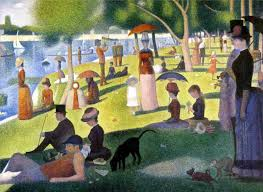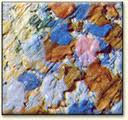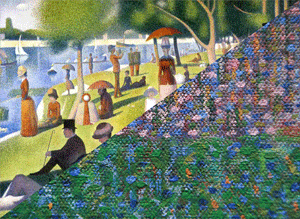If someone gave you a ticket to spend a day anywhere in the United States, where would you go?
I’d be on a plane to Chicago before you could say “deep dish pizza”.
Several years ago I had opportunity to attend a preaching/teaching conference at Willow Creek Church with my friend and pastor Duane Cross. When it was over we had some time before catching our plane back to Phoenix. So we drove downtown to the Art Institute of Chicago. My favorite place in my favorite city. One of the world’s best collections of classic art. Monet, Van Gogh, Rembrandt, and Picasso all under one big roof.
I actually got misty seeing the lion statues that guard the entrance to the museum. Perhaps you have a place you go to that is good for your soul. The Art Institute of Chicago is good for my soul.
Keep in mind that when it comes to art, I can’t draw a straight line if you spot me a ruler. So I’m sure I can’t appreciate the complexity and genius of these masterpieces the way a true artist would. But I go and stand in front of them and am moved by them just the same.
We had limited time. Duane asked me what I most wanted to see. I told him that if all we did was go and stare at Seurat’s “Sunday Afternoon”, it would be worth the trip. It’s my absolute favorite.

Seurat, a mere 25 years old when he painted this defining work, had spent previous years studying theories of light. The painting technique that he employed was based on those theories. Unlike the broader brush strokes of mixed colors that other Impressionist painters used, Seurat developed a new technique called “pointellism”. Or, as he preferred to describe it, “divisionism”.
As to size, it is a huge painting – the canvas stretches 7 feet x 10 feet. This masterpiece took 2 years to complete. From a distance what you see is the picture. The images of the people enjoying their Sunday afternoon on the Sienne River in France. What you don’t see from a distance is that the entire painting is made up of tiny dashes and dots of pure color paint.
For the first year, Seurat painted nothing but horizontal dashes. The dashes are each one detached from the others. Then he added the dots of pure color paint. As you might imagine, this was a tedious and exacting process. The project was so intense that during the two years it took him to paint it, Seurat refused to have lunch with his close friends lest they distract him and break his concentration.
 Up close, the dashes and dots look like, well…dashes and dots. Yet as you step back from the painting to a distance, the dashes and dots combine optically in your eye to form the desired image.
Up close, the dashes and dots look like, well…dashes and dots. Yet as you step back from the painting to a distance, the dashes and dots combine optically in your eye to form the desired image.
For two years, nothing but days and days of dashes and dots.
Dashes and dots.
How could dashes and dots make a picture? It doesn’t make sense that detached horizontal dashes and dots of paint can combine to make a masterpiece.
But they do.
What are the dashes and dots of your life? What of those thousands of detached horizontal lines of seemingly disconnected events? When you step back are they really all that disconnected? When you step back far enough can you see how God has painted them in such a way that they form the picture of your life?
Was it really chance that you took that job in a different city? Was it just coincidence that you met that certain person? Was the career you felt trapped in really a waste of time? Was the serious illness really a stand alone event that led nowhere? Was the tragedy in your life the end of a dream? Or was God preparing you for something bigger?
Standing less than a foot away from Seurat’s “Sunday Afternoon” and staring at the canvas, you think, “No way does this make a picture. It’s just dashes and dots of paint. No rhyme, no reason, no pattern.” And up close, you’d be right. It looks like one big random mess. 
Only when you step back does it begin to make sense. 5 feet. 10 feet. 15 feet. 20 feet. And then the random mess becomes a beautiful Sunday afternoon picnic.
Friends, if you’re like me, you might in the middle of a mess that makes no sense. All you see are dashes of dread and dots of pain. You want to make sense of it but you can’t. Not right now. We’re too close to see what God is painting. This close it’s just dashes and dots. The disappointments and heartbreaks, how can these be part of a beautiful picture?
With brush strokes of grace, God the Artist makes sense of our dashes and dots. Let’s remember to step back from time to time to see how He is bringing them together into the beautiful picture that is our life. Because whether we see it or not, He’s doing exactly that.
God promises to continue perfecting the good work that He began in us. Which is to say He will continue dashing and dotting until the masterpiece is complete.
“For we know that all things work together for good to those who love God and are called according to His purpose.”
– Romans 8:28
“For I am confident that He (God) who began a good work in you will continue to perfect it until the day of Christ Jesus.”
– Philippians 1:6
Todd A. Thompson – September 25, 2007


